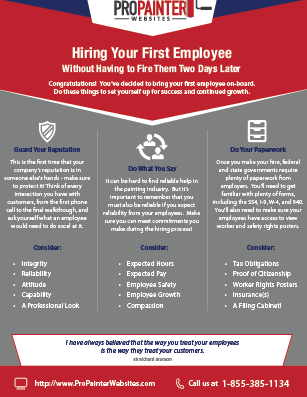Seasonal Considerations For Commercial Outside Painting: What You Need To Know
Seasonal Considerations For Commercial Outside Painting: What You Need To Know
Blog Article
Web Content Created By-Leach Urquhart
When you're preparing a commercial external paint project, seasonal factors can make or break your outcomes. You'll want to think about exactly how temperature and humidity effect paint application and drying times. Picking the right period can guarantee your paint adheres appropriately and lasts longer. Yet which seasons are absolutely the very best for this type of work? Allow's check out the key elements that can affect your project's success.
The Influence of Temperature Level on Paint Application
When you're planning an industrial exterior painting job, the temperature level can considerably affect exactly how well the paint sticks and dries.
Ideally, you wish to paint when temperatures vary between 50 ° F and 85 ° F. If it's too cold, the paint might not heal appropriately, resulting in problems like peeling off or cracking.
On the other hand, if it's as well hot, the paint can dry out as well rapidly, protecting against appropriate adhesion and resulting in an uneven finish.
You need to additionally take into consideration the time of day; early morning or late afternoon offers cooler temperature levels, which can be a lot more favorable.
Always inspect the producer's recommendations for the specific paint you're making use of, as they frequently supply assistance on the ideal temperature level range for ideal outcomes.
Moisture and Its Impact on Drying Times
Temperature level isn't the only ecological factor that affects your business exterior paint task; moisture plays a considerable role also. High humidity degrees can decrease drying out times dramatically, influencing the general high quality of your paint work.
When the air is filled with dampness, the paint takes longer to treat, which can result in concerns like inadequate adhesion and a greater risk of mold growth. If you're repainting on an especially humid day, be prepared for extended wait times between layers.
It's critical to keep track of regional weather and plan as necessary. Preferably, aim for humidity degrees in between 40% and 70% for ideal drying.
Maintaining these consider mind ensures your task stays on track and provides an enduring finish.
Best Seasons for Commercial Exterior Paint Projects
What's the very best time of year for your business outside painting jobs?
Spring and very early loss are normally your best choices. During these seasons, temperatures are mild, and moisture degrees are commonly lower, developing ideal conditions for paint application and drying out.
Prevent summer's intense heat, which can trigger paint to dry as well promptly, causing poor bond and finish. Likewise, winter months's cool temperatures can hinder appropriate drying out and curing, running the risk of the long life of your paint task.
commercial exterior painter minneapolis for days with temperatures in between 50 ° F and 85 ° F for ideal results. Remember to check the local weather prediction for rain, as wet conditions can ruin your project.
Planning around these elements guarantees your painting project runs smoothly and lasts longer.
Verdict
Finally, planning your commercial external paint jobs around seasonal factors to consider can make a substantial difference in the result. By organizing exterior residential painting throughout the suitable temperatures and humidity levels, you'll make sure much better bond and drying out times. Keep in mind to keep an eye on regional weather prediction and choose the correct time of year-- spring and early loss are your best choices. Taking these steps will aid you attain a long lasting and specialist coating that lasts.
